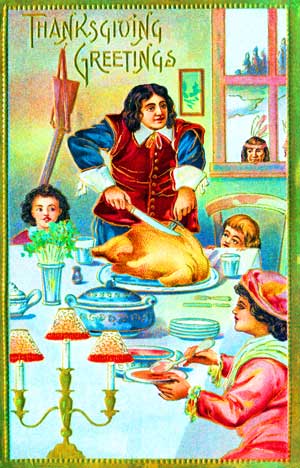Roy Williams was born in July of 1907 and was an artist at the Walt Disney Studios. While primarily a cartoon artist, Roy is best remembered for being the “adult Mouseketeer,” known as Big Roy, on The Mickey Mouse Club. The way he got there, with no acting experience, is an interesting story.
Born in Colville, Washington, and raised in Los Angeles, California, Roy attended Freemont High School. In high school, Roy gained the nickname “Moose,” because of his large size, and his prowess as a popular and skilled football player. He also drew funny cartoons for his high school newspaper. His father had crossed to the other side before Roy was twelve years old, and his mom supported the family by working in a candy shop and as a hotel chambermaid.
After graduating, Walt Disney personally hired him to be an artist at the Walt Disney Company in 1930. Walt hired Roy not only for his artistic talent but because when Roy came to the subsidiary Hyperion Studios for an interview, he had a ten-minute conversation with someone he took to be an office boy because the man looked so young. That man he mistook for being an office boy was Walt Disney himself, and Walt was so amused by this that he hired Roy to work for the company.
Roy worked on animated shorts at the Walt Disney Company while attending the Chouinard Art Institute at night. He also developed story ideas for the Disney company. In addition, Roy designed more than one hundred Disney military insignias during WWII, including one for the famous Flying Tigers.
Walt Disney himself paid for Roy to obtain his training at the Chouinard Art School, which he attended for three years. Once his training was completed, Roy began on his true career path at the Disney company, working his way up from an in-betweener animator to a full-time animator.
While Roy was a skilled animator, his true skill was in gags and pranks. One time, when Walt saw Roy pitch an idea that involved Donald Duck swallowing a magnet and becoming magnetized, Walt moved Roy from the animation department to the story department. Those who worked with him said of Roy that he usually did not come up with complete story ideas, but was a master at coming up with gag or prank ideas for other people’s stories. He would often come up with hundreds of ideas for a single story, of which only one or two would be useable, but at the time, this was an incredibly good success record for what were usually six-minute cartoons.
Also, Roy was apparently quite the character, himself. Other animators and co-workers at the Disney Company would say that they could spend three to four hours at a time telling each other Roy Williams stories and none of them would ever repeat a story or tell the same one as someone else. He was known for his size, yes, but also was known for his quick temper and his gullibility.
This gullibility often made Roy the target of pranks at the Disney Company. A favorite of his co-workers was to use a water pistol to shoot him in the crotch, making it look like he wet himself, though, with his large belly, he never noticed it until someone would point it out to him. Roy was not merely the victim of pranks by his co-workers, though. He enjoyed dishing out pranks, himself. One of his personal favorites was a large, gift-wrapped chunk of iron that he kept by his front door at his house. Whenever a male visitor came to call, Roy would tell him the gift was his, and to please take it away with him still wrapped, and unwrap it once he got home. Of course, the iron was too heavy for anyone to lift, and Roy enjoyed watching people try to lift it, and it amused him to observe how long it took someone trying to lift it before they gave up.
One of Roy’s especially well-recognized talents was his ability to draw well and quickly. He was a terrific sketch artist, and often appeared at Disney events to do caricatures and character drawings for the audience and invited guests. The people who watched him were amazed by his ability to accurately draw Disney characters in seconds, and he even taught audiences how to draw Mickey Mouse. Roy began doing these appearances at Walt’s request at the 1951 press event for the re-release of the cartoon movie, Snow White.
In the early years of Disneyland, Roy would sometimes go to the Art Corner there, and sometimes to the outside of the Red Wagon Inn, and set up with an easel and paper. With him, he had credentials he also set up that identified him as a Disney artist. He would draw pictures for the park guests, usually quick, loose sketches. Many people who came to the parks treasured these sketches, because they were the product of their only encounter with a genuine Disney artist.
In the mid-1950s, after The Mickey Mouse Club was on TV, the Mattel toy company issued a Mousekatooner art kit that featured a ten-inch tall lithograph tin figure of Roy that a child could move to trace the drawing underneath, to teach a child how to draw cartoons.
After more than two decades of working as an artist and story idea guy for the Disney Company, Walt decided that he wanted Roy to be on The Mickey Mouse Club. According to Roy, Walt one day walked into Roy’s office and said, “Say, you’re fat and funny looking. I’m going to put you on The Mickey Mouse Club, and you can be the Big Mooseketeer.” Roy had no acting experience and was terrified at the idea of being on TV, but he put that aside to trust in Walt’s vision. His trust in Walt’s vision and judgment was bigger than any apprehension he had at being thrust into the position of a TV actor.
While his adult co-workers found Roy unpredictable, quick-tempered, and sometimes difficult to work with, though he was brilliant at what he did, the children on the show, The Mouseketeers, always spoke of him fondly, saying he loved kids, always had time for kids, and always tried to help them in whatever ways he could. Roy crossed to the other side in November of 1976 in Burbank, California. He is buried at the Forest Lawn Memorial Park in the Hollywood Hills of Los Angeles. He was inducted as a Disney Legend in 1992. There is a Roy Williams Airport on Sunfair Road in Joshua Tree, California that is named after him. A proposition was introduced in 2015 to convert the airport into a solar farm, but this has not yet been done.




